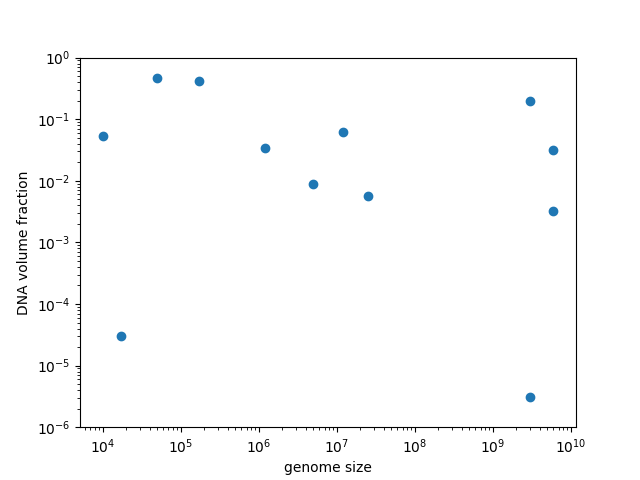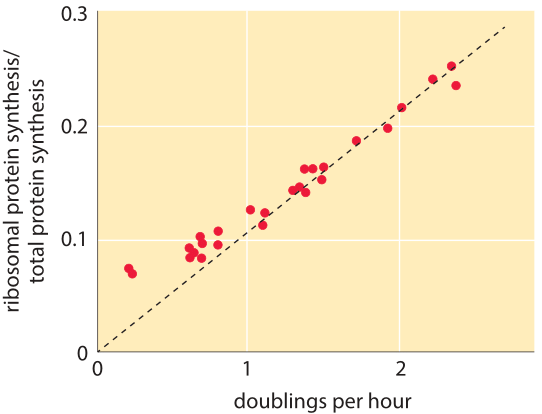Assignments
-
collect 10 different entities (viruses, bacteria, spores, cell types) and calculate the fraction of the cell/organelle that is DNA
-
How do you expect the ribosome fraction to vary with growth rate?
DNA packaging fraction
| organism | genome size | diameter[nm] |
|---|---|---|
| HIV | 1e4 | 70 |
| T4phage | 170000 | 90 |
| LambdaPhage | 50000 | 58 |
| Ecoli | 5e6 | 1000 |
| Yeast | 2.5e7 | 2000 |
| YeastSpore | 1.2e7 | 700 |
| lymphocyte | 6e9 | 7000 |
| fibroblast | 6e9 | 15000 |
| ooctye | 3e9 | 120000 |
| Sperm | 3e9 | 4000 |
| HumanMitochondira | 17e3 | 1000 |
| Mimivirus | 1.2e6 | 400 |

Ribosome fraction
- the faster bacteria grow, the larger the ribosome fraction.
- fast growth happens under favorable conditions with easily digestible food.
- in such conditions, most resources can be dedicated to replication

The rate of protein production per cell must be directly proportional to the growth rate. If we assume that the translation rate is constant at \(10aa/s\), this implies that that ribosome fraction most be proportional to growth rate itself.